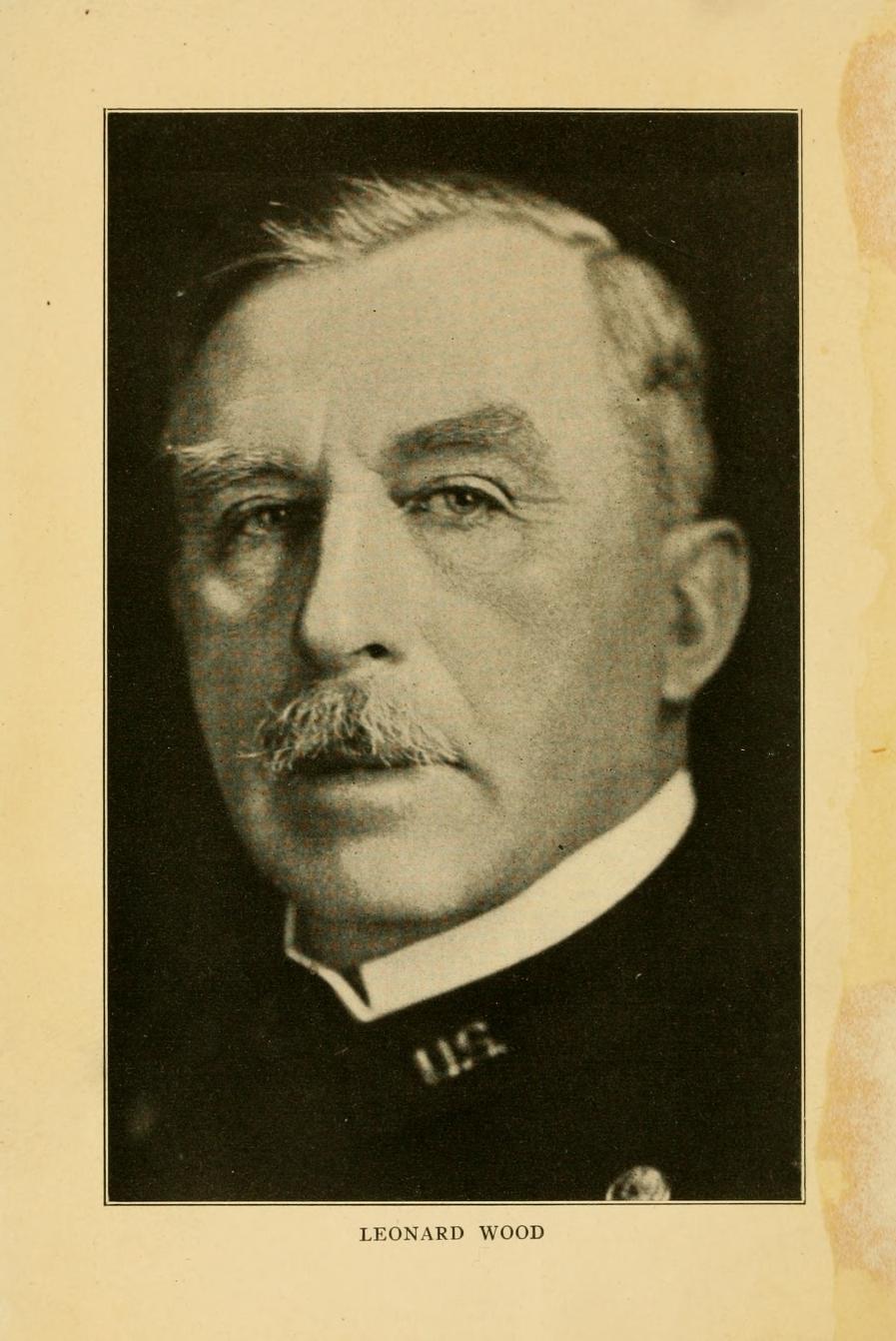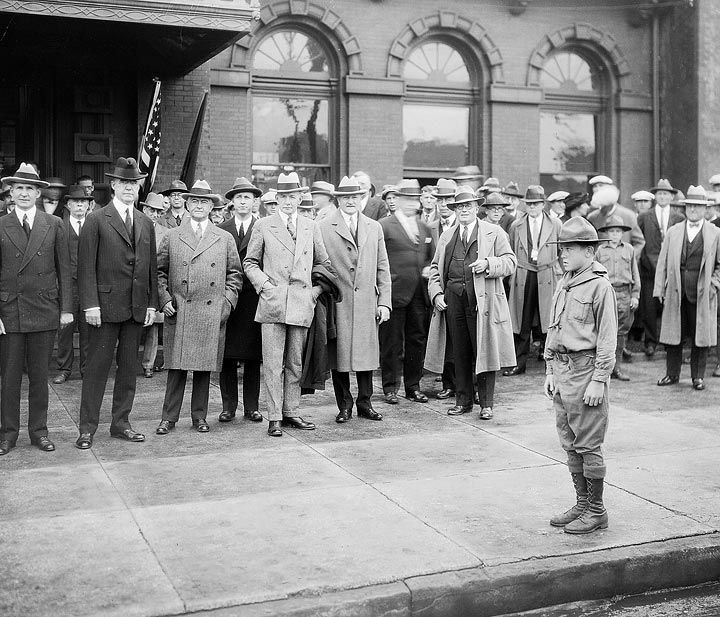 A World War I poster featuring Gen. John J. Pershing. NSHS 13000-3565 (at left).
A World War I poster featuring Gen. John J. Pershing. NSHS 13000-3565 (at left).
World War I did not produce a military hero who became President, but it did launch at least one aspirant, Gen. John J. Pershing, who was supreme commander of the U.S. forces in Europe during the war. Pershing challenged a second soldier-candidate from an earlier war, Gen. Leonard Wood, for the Republican presidential nomination in 1920. However, the “Pershing for President” boom soon collapsed.
Pershing emerged as a presidential possibility soon after the close of World War I. When he returned to the United States from Europe, welcoming crowds were enthusiastic. His reception in New York was like that of a returning hero as thousands lined Fifth Avenue to catch a glimpse of the most heroic figure of the war. Cautious by temperament, Pershing consulted friends, especially Charles Gates Dawes (later vice president of the United States from 1925 to 1929) about what course his future should take. Dawes and Pershing had become friends when both lived in Lincoln in the 1890s. During World War I Dawes was purchasing agent for Pershing’s American army in France.
 Leonard Wood. From Joseph Hamblen Sears, The Career of Leonard Wood (New York and London, 1919).
Leonard Wood. From Joseph Hamblen Sears, The Career of Leonard Wood (New York and London, 1919).
Dawes and another friend of both Dawes and Pershing, Mark Woods of Lincoln, began working to establish a “Pershing for President” boom in Nebraska. Like most professional soldiers, Pershing lacked a permanent residence, but he had lived in Lincoln from 1891 to 1895, and his family continued to live there. His backers faced a daunting task: building a statewide organization before the April 1920 presidential primary. Two rival candidates, Leonard Wood and Senator Hiram W. Johnson, were far ahead.
The strategy for capturing the sixteen Nebraska votes at the Republican convention was to present Pershing as a favorite son candidate and rely on voter loyalty to a fellow Nebraskan. A long campaign ended when Nebraska voters went to the polls to vote in the primaries on April 20, 1920. The final tally found Johnson the victor with 63,262 votes; Wood, 42,385; and Pershing, 27,669. Nebraska’s favorite son carried only Lancaster County by the slim plurality of 35 percent and was second choice in another ten counties near Lancaster.
 A Lincoln Boy Scout was on hand when Vice President Charles G. Dawes (fifth from left) arrived in Lincoln on September 30, 1926. Governor Adam McMullen (fourth from left) and Gen. John J. Pershing (sixth from left), who had been visiting his sister in Lincoln, greeted the vice president. NSHS RG2183:PH1926-09-30:2 (above).
A Lincoln Boy Scout was on hand when Vice President Charles G. Dawes (fifth from left) arrived in Lincoln on September 30, 1926. Governor Adam McMullen (fourth from left) and Gen. John J. Pershing (sixth from left), who had been visiting his sister in Lincoln, greeted the vice president. NSHS RG2183:PH1926-09-30:2 (above).
Learn the reasons for the poor political showing of a man idolized as a military hero in a Timeline column on the Nebraska State Historical Society website. The full text of Edward A. Goedeken’s “The Dawes-Pershing Relationship during World War I,” published in Nebraska History (Spring 1984), sheds more light on Pershing’s career and is now available on the NSHS website.
— Patricia C. Gaster, Assistant Editor for Research and Publications



